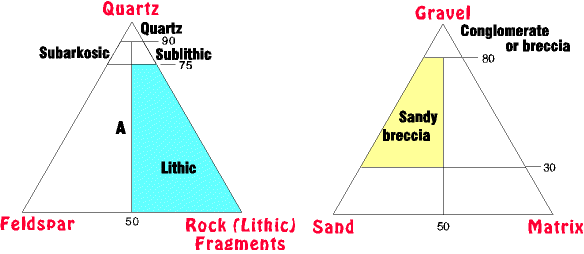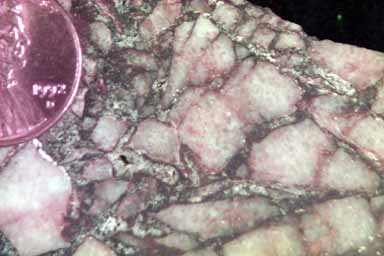igneous rocks
metamorphic
rocks
sedimentary rocks
|
QFL Composition:

Because the composition of this rock is dominantly quartz one might be inclined to call its QFL quartz. Technically, however, the breccia fragments are quartzite, a metamorphic rock. Therefore, we classify this as a lithic breccia.
Description:
This is a sawed slab of rock. Angular gravel particles in the granual size range (4-64 mm) with a quartz sand matrix. breccia fragments are composed of quartzite (metamorphosed quartz sandstone).
Tectonic Association:
Breccias are associated with mechanical weathering in regions of high tectonic activity, typically relatively close to the sourceland.
Rocks such as this are often deposited in talus slopes or alluvial fans at the base of slopes. It does not take much transportation to begin to round these particles into conglomerates, so they are usually very proximal to the sourceland.
Breccias are the result of either mechanical weathering, or of tectonic brecciation (that is, the rock is shattered and crushed along fault zones).

Detail QFL Composition:

Because the composition of this rock is dominantly quartz one might be inclined to call its QFL quartz. Technically, however, the breccia fragments are quartzite, a metamorphic rock. Therefore, we classify this as a lithic breccia.
Description:
Sawed slab of rock. Angular gravel particles in the granual size range (4-64 mm) with a quartz sand matrix. breccia fragments are composed of quartzite (metamorphosed quartz sandstone). A close look at the composition of the breccia fragments will show the individual fused quartz sand grains that compose the quartzite.
|